Introduction: In this article, Melissa Davenport Berry shares photos and newspaper clippings about the Lost Pilgrims Memorial being unveiled in Provincetown, Massachusetts, in 1920. Melissa is a genealogist who has a blog, AnceStory Archives, and a Facebook group, New England Family Genealogy and History.
Today I continue with the Provincetown, Massachusetts, scrapbook belonging to Cora Gray West Fuller (1866-1930), a Cape Cod newspaper woman.
Cora was the daughter of Captain Simeon L. West and Eliza McLean, and the granddaughter of Eben West and Harriet Lavender. She married Arthur Wheeler Fuller, son of James Fuller and Maria F. Atkins.
Cora’s scrapbook, containing news clippings and photos from the early 20th century in Provincetown, was given to the Pilgrim Monument and Provincetown Museum by Mrs. Nellie Law in 1931.
One image found in the scrapbook is from August of 1920. The photo was taken minutes before the unveiling of a memorial tablet for the five Pilgrims on the Mayflower who died at sea in Cape Cod Harbor near Provincetown.
The tablet was erected by the Society of Massachusetts Mayflower Descendants during the celebration of the 300th anniversary of the landing of the Pilgrims.

The Lost Pilgrims Memorial lies on the western side of the small park below the Pilgrim Monument tower in Provincetown. Here is a picture and transcription of the memorial.
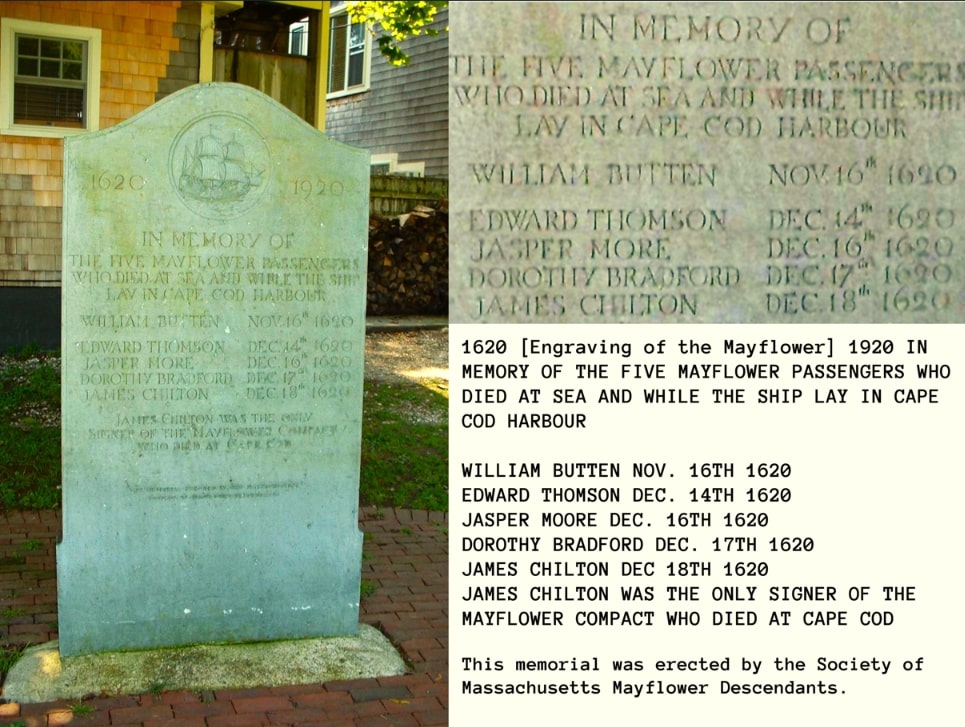
The program to unveil the memorial in August of 1920 opened with a brief talk from Dr. Frederic Augustus Washburn, governor of the Society of Massachusetts Mayflower Descendants, and a direct descendant of Mayflower passengers Isaac Allerton and Robert Cushman.
Rev. Dudley Richards Child of Hudson, a direct descendant of James Chilton (one of the Mayflower passengers listed on the tablet) offered prayers. Child’s other Mayflower passengers include Francis Cook, Isaac Allerton, Stephen Hopkins, and Robert Cushman.
The chairman of the Provincetown Tercentenary Committee, Thomas Chandler Thatcher, a descendant of Mayflower passengers John Howland, Elizabeth Tilley, and Edward Winslow, spoke and provided a background on the making of the memorial.
According to Thatcher, the memorial tablet was made of Pennsylvania slate and cost $3,000. It was executed by John Evans & Co. of Boston. Charles Allerton Coolidge, architect and former governor of the Society, designed the letters in the inscription, following the examples of 17th century tombstones.
George Ernest Bowman, secretary and founder of the Society, spoke on the many accomplishments of the organization. Bowman, a direct descendant of Mayflower passenger Elder William Brewster, also directed attention in his talk upon his ancestor who officiated the funerals in 1620 of the five passengers who were being honored.
Gov. Channing Harris Cox, guest of honor, delivered the dedication address to the 200 attendees. Cox noted that many fail to grasp the significance of the Pilgrims’ hazardous journey. He made mention of former presidents who spoke about the Pilgrims in prior years: among them are William Howard Taft, Warren Gamaliel Harding, and Franklin Delano Roosevelt.
There are two powerful characteristics that made the Pilgrims thrive in the New World, Cox noted: individual responsibility and religious civil liberty.
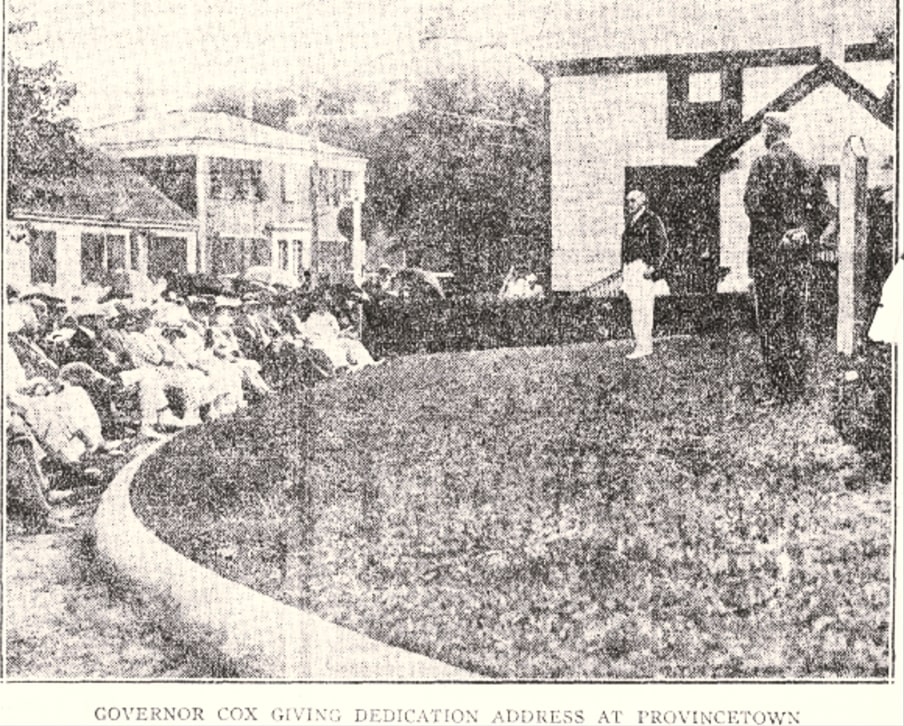
Miss Susan Hammond, of Nahant, Massachusetts, daughter of Samuel Hammond II and Grace Learoyd and a direct descendant of Mayflower passenger James Chilton, did the unveiling of the monument. She was accompanied by members of her family.
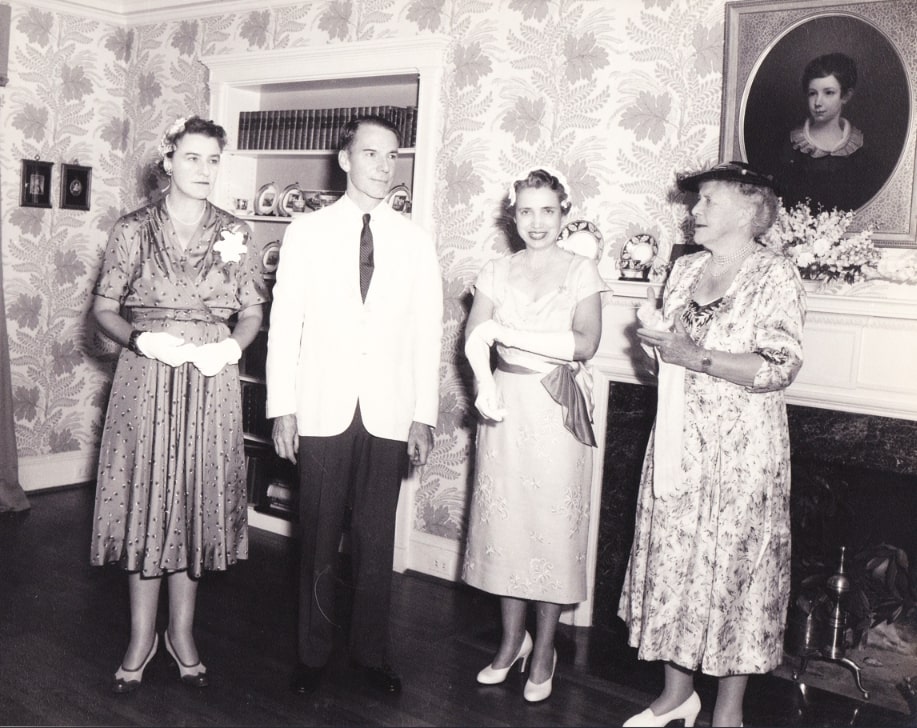
Several newsclips in Cora’s scrapbook cover the plans for the Pilgrim memorial tablet, and an additional memorial planned for Mary Chilton. Here is an article from a Michigan paper.
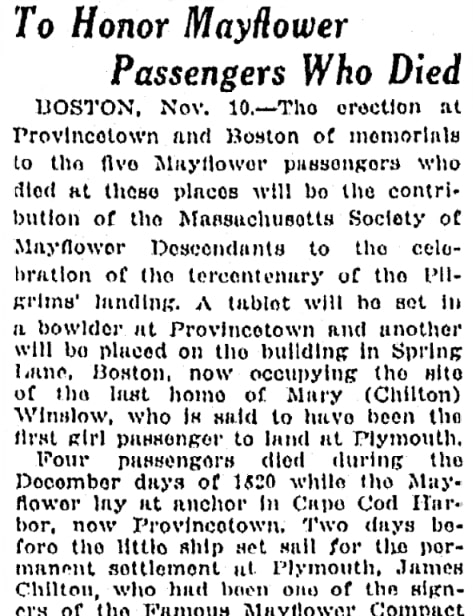
This article reports:
…A [memorial] tablet will be set in a bowlder at Provincetown and another will be placed on the building in Spring Lane, Boston, now occupying the site of the last home of Mary (Chilton) Winslow, who is said to have been the first girl passenger to land at Plymouth.
Four passengers died during the December days of 1620 while the Mayflower lay at anchor in Cape Cod Harbor, now Provincetown. [A fifth passenger, William Butten, died just three days before land was sighted.] Two days before the little ship set sail for the permanent settlement at Plymouth, James Chilton, who had been one of the signers of the famous Mayflower Compact in Cape Cod Harbor, died. A day before the little band had lost Mrs. Dorothy Bradford, first wife of Governor William Bradford, by accidental drowning, and the deaths occurred also of Edward Thompson, a servant, and Jasper More, a child [son of passenger Richard More].
Mary Chilton, who was the daughter of James Chilton, sailed on for Plymouth with her mother, and struggled through the trying times of the Colony’s early days. She later married John Winslow, and before 1660 they removed to Boston, where she died in 1679, having survived her husband by five years. She was the only Mayflower passenger to become a resident of Boston. [The couple left many descendants.]
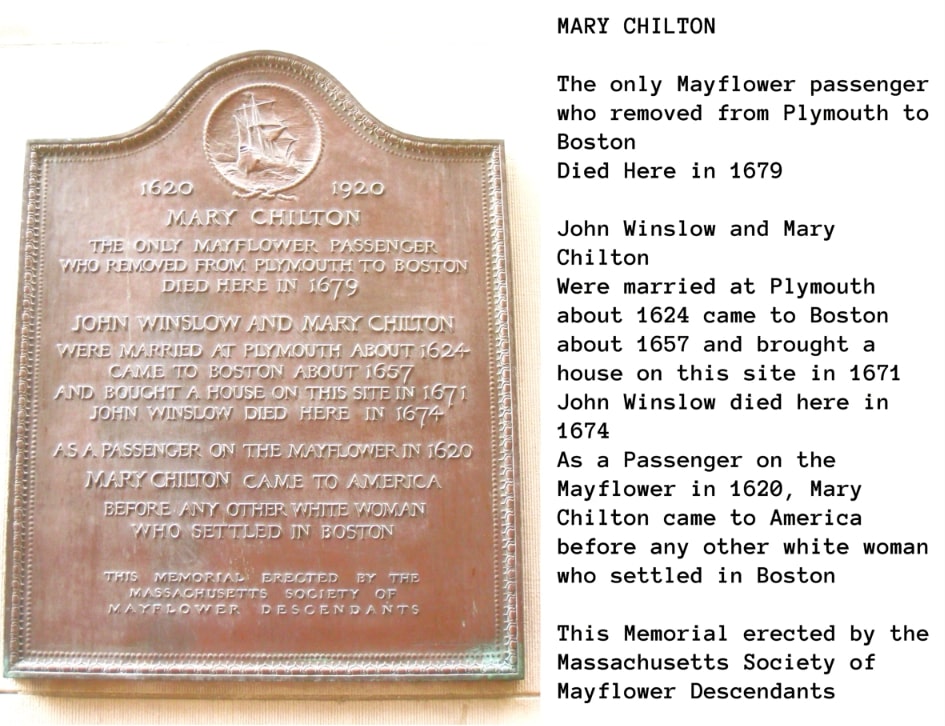
Explore over 330 years of newspapers and historical records in GenealogyBank. Discover your family story! Start a 7-Day Free Trial
Note on the header image: “Provincetown Pier & Gulls, Massachusetts” by Carl Van Vechten, 1936. Credit: Library of Congress, Prints and Photographs Division.
Related Article:
